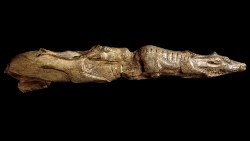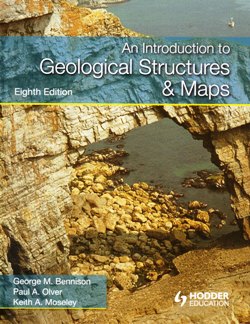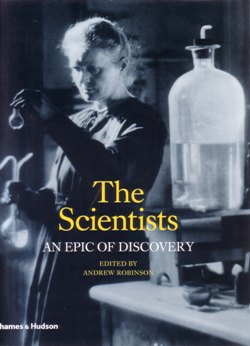 ICE AGE ART: ARRIVAL OF THE MODERN MIND
ICE AGE ART: ARRIVAL OF THE MODERN MIND
Quite apart from its aesthetic appeal and general cultural value, the exhibition of Ice Age art at the British Museum also has specific interest for geologists and especially palaeontologists.
The exhibition includes over 130 objects - carvings, engravings and some of the oldest ceramic works known, mostly dating from between 35,000 and 15,000 years ago. The objects accurately depict a selection of the Middle to Late Devenisan bestiary encountered by the Late Paleolithic people who first occupied Eurasia. From their close encounters with the Ice Age megafauna, these hunters developed an intimate knowledge and understanding of their prey and the numerous dangerous carnivores, which saw them as prey.
These ‘art’ images were made mostly from mammoth ivory, bone, stone and clay and include mammoth, big cats, reindeer, bison, auroch, ibex and horses, along with fish such as salmon and sole, birds such as swans and ptarmigan and of course the humans themselves, especially the so-called ‘venus figurines’ of pregnant women. Many of these images represent the only existing first hand observations of these animals, especially the extinct species.
They show details of soft tissues that support other evidence from frozen cadavers and behaviours, which otherwise can only be assumed from comparisons with the closest living relatives. All these images may be familiar enough from photographs but seeing the real thing is still something of a shock, partly because of their antiquity but more especially from the great skill and sensitivity with which they were made.
The exhibition represents a once-in-a-lifetime opportunity to see works that are normally scattered through the archaeological museums of Western Europe from London to Brno. A visit is well worth the effort and the £10 entry fee but if you cannot get to it, consider the excellent book. It is a stand-alone work, covering much more background information than can be gleaned from the exhibition and iillustrates many more works than are on display.
Reviewed by: Douglas Palmer
ICE AGE ART: ARRIVAL OF THE MODERN MIND EXHIBITION 7 February – 26 May Room 35 - British Museum, Great Russell Street, London. Entry: £10’ Late opening: Fridays. Booking T: 020 7323 8181. W: www. britishmuseum. org/whats_on/exhibitions/ice_age_art. aspx
ICE AGE ART: ARRIVAL OF THE MODERN MIND
JILL COOK Published by: The British Museum Press 2013
ISBN 9780 7141 2333 2 HB (hbk) 240 pp
List price £30, www. britishmuseum. org/publishing
 INTRODUCTION TO GEOLOGICAL STRUCTURES AND MAPS
INTRODUCTION TO GEOLOGICAL STRUCTURES AND MAPS
The 8th edition of this classic geology text book has been updated and expanded and now includes colour photographs and maps as well as the extensive black and white figures and diagrams of previous editions. In addition to the improved look, the sections describing igneous intrusions, plate tectonics and impact structures have been expanded and there is the welcome addition of a new section on way-up criteria.
In summary, the book, which is aimed at students (‘A’-Level to undergraduate level), leads the reader through the basics of interpreting geological structures and geological maps by first setting out some of the fundamental rules such as the laws of superposition, cross-cutting relationships etc. Once the foundation has been established the authors build up through the basics of the interpretation of horizontal and dipping strata that are the cornerstones of geological map and structure interpretation, before moving on to the more detailed aspects of geological structures including unconformities, faults and folding. The final portion of the book describes more complicated geological structures such as igneous and impact features, economic problems and complex structures.
The book is peppered with maps, photographs and examples of the geological structures discussed in the text on practically every page. These frequent interludes bring the text to life and allow the reader to visualise clearly the topics under discussion. The photographs (many in colour) add a practical real-world dimension to the ‘idealised’ figures and the 3D models are useful.
This book is immensely practical and is chock full of examples to teach the student as he or she starts on this fascinating and rewarding journey - as well as offering the more experienced practitioner a reminder of the tools of the trade. (Don’t worry - the answers are at the back!) Readers can work their way through simple bed thickness and interpretation of outcrop locations, essential for the practising engineering geologist, through to more specialised aspects of geological structure interpretation associated with ore deposits.
I would photocopy the maps before attempting the problems, as it can be difficult to work around the spine of the book (and it gives you the opportunity to have multiple attempts). Although this excellent book is aimed primarily at students (and it should be high up on their ‘to buy’ list), it would make a welcome addition to any geologist’s bookcase. The manager who has been kept from field mapping might find this book provides a welcome antidote to his spreadsheets, while even the working field geologist may find it a useful reference - or light relief after a hard day. An excellent book well worth purchasing.
Reviewed by Tom Berry
AN INTRODUCTION TO GEOLOGICAL STRUCTURES AND MAPS (8TH EDN. )
BENNISON, OLVER & MOSELEY, Published by: Hodder Educational, London 2011
ISBN: 978-1444112122 184pp. List Price: £21. 99
 THE SCIENTISTS: AN EPIC OF DISCOVERY
THE SCIENTISTS: AN EPIC OF DISCOVERY
Here’s the game: choose the top 43 outstanding scientists who have revolutionised our understanding of the world. Or, to make it simpler, choose the eight who have had the biggest impact on Earth science. Andrew Robinson’s geological pantheon includes James Hutton, Charles Lyell, Alexander von Humboldt, Alfred Wegener under the category ‘Earth’, Ernest Rutherford under ‘Inside the Atom’, Carl Linnaeus and Charles Darwin under ‘Life’ and Louis and Mary Leakey under ‘Body and Mind’. I bet that you, ‘dear, geologically minded reader’, would have had a significantly different list.
Robinson’s total list of 43 is heavily weighted towards European DWMs (Dead White Males) and I suspect that any non UK scientist would produce a very different list. Perhaps ‘The Scientists’ is not pretending to be anything other than a vehicle for a well-presented selection of potted biographies of interesting scientists. At least they are written by appropriate authors, many of whom are emeritus professors of a discipline relevant to their subject, plus some well-known science journalists and historians of science.
Our geological giants are appraised by writers such as Martin Rudwick, who certainly know their stuff. He does Hutton and Lyell, who would probably be members of any geological pantheon; but with only a thousand or two words available, the writer’s horizons are quite limited. As we would expect, Rudwick turns in a couple of very interesting essays, which ‘burst the limits’ of space, if not time, imposed upon him. Both of his eminences are firmly placed in context without in any way belittling their individual contributions.
An American academic, Laura Walls, describes Alexander von Humboldt, who might seem a surprising choice but in the wider Earth science context is an important figure, admired and envied by Darwin, who in the early days of the Beagle voyage complained that he was just dogging Humboldt’s footsteps without finding anything new.
And then the Leakeys; significant figures but in the top ten? And Virginia Morell’s brief biography is rather pedestrian compared with her much more searching and revealing biography, ‘Ancestral Passions’. Perhaps the problem is the nature of Earth science where major breakthroughs are more incremental than in other sciences such as maths or physics, so choosing who made the most important find is inherently more difficult.
- Ref: Morell, V 1995. Ancestral Passions. Touchstone, New York, 640pp.
Reviewed by Douglas Palmer
THE SCIENTISTS: AN EPIC OF DISCOVERY
ANDREW ROBINSON (ED. ), Published by: Thames and Hudson Publication 2012
ISBN 978-0-500-25191-1. 304pp. List Price: £24. 99
 THE GLOBAL CRYOSPHERE, PAST, PRESENT AND FUTURE
THE GLOBAL CRYOSPHERE, PAST, PRESENT AND FUTURE
This is an excellent book which deals with all the components of the Earth's cryosphere – all forms of snow and ice, both terrestrial and marine. It gives a summary of snow cover, glaciers, ice sheets, lake and river ice, permafrost, sea ice and icebergs – their history and projected future. It is agreeably written and suitable for undergraduate and graduate level students in environmental science, geography, geology, glaciology, hydrology, water resource engineering and ocean sciences.
The book includes a useful index, glossary and a large list of references. It has many black and white photographs, figures, maps, tables, colour plates and thematic boxes on selected topics. It also gives an up-to-date summary suitable for anyone undertaking research on the cryosphere.
There is a detailed discussion of the formation of snow. At continental scales, snow distribution depends on latitude and season. However, at regional scales snow cover depends on factors such as latitude, elevation, orography and meteorological factors, all of which are discussed in detail and at length.
The treatment deals with models considering snow cover (largely Land Surface and General Circulation Models). It gives details of the mathematics necessary to understand the processes involved; mathematics occurs often in this book, but it is neither too extensive nor too complicated to make the book unattractive.
Of course the authors explain the high albedo of snow and its effect on satellite images. They touch briefly on neural network algorithms but once again avoid the bear-trap of going into too much detail.
The book reviews the condition of glaciers all around the world, and avalanches, and then takes a longer perspective by examining ice ages and ice-free periods in the geologic past - including ‘Snowball Earth’ and the ice-free Cretaceous. The text examines recent changes in the cryosphere (retreat of glaciers and Arctic ice sheets and the degradation of the permafrost) and as you would expect, anthropogenic climate change issues make an appearance.
The book concludes with a survey of the winter sports industry, hydropower and the uses of freshwater ice (which has been used in China to keep things cool in summer since the 7th Century BC).
This is a very good book and taught me a lot. It represents good overall value at the rather peculiar price of £42.50
THE GLOBAL CRYOSPHERE, PAST, PRESENT AND FUTURE.
ROGER BARRY AND THIAN YEW GAN. Published by Cambridge University Press, 2011
ISBN 978-0-521-15685-1 Softback. 472pp. List price: £42.50
www. cambridge. org
Reviewed by Steve Rowlatt